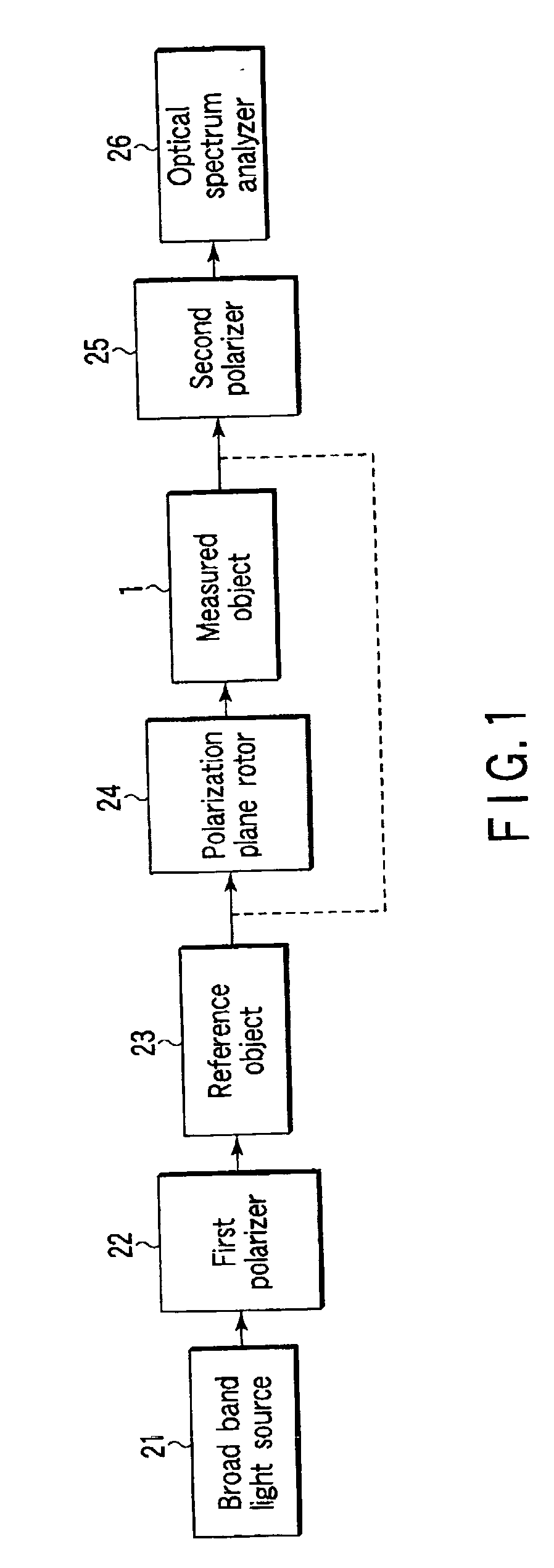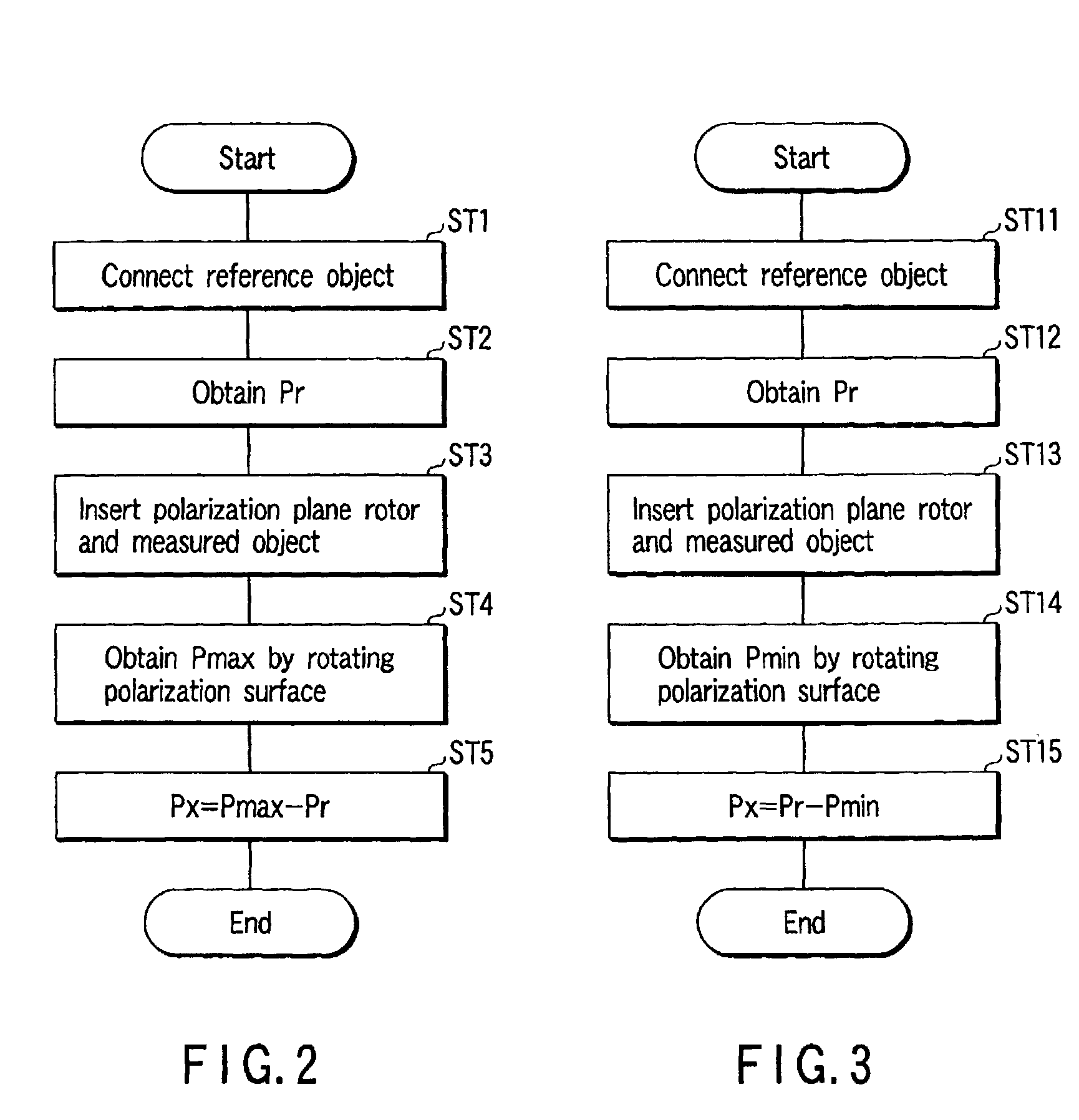Polarization mode dispersion measuring method and polarization mode dispersion measuring system
- Summary
- Abstract
- Description
- Claims
- Application Information
AI Technical Summary
Benefits of technology
Problems solved by technology
Method used
Image
Examples
first embodiment
[0089] FIG. 1 is a block diagram that explains a polarization mode dispersion measuring method and a structure of a polarization mode dispersion measuring system for executing this method according to a first embodiment of the present invention.
[0090] In FIG. 1, a broad band light source 21 is constructed of a white-color lamp, an SLD (super-luminescence diode) and the like, and has a substantially uniform spectrum in a wavelength area of a light handled by a measured object 1.
[0091] A light emitted from this broad band light source 21 is incident to a first polarizer 22.
[0092] This first polarizer 22 extracts a linearly polarized beam having a constant polarization direction from the light emitted from the broad band light source 21, and makes the extracted linearly polarized beam incident to one side of a reference object 23.
[0093] The reference object 23 has a PMD value (a differential group delay time) larger than the measured object 1, and for example, an optical fiber (called ...
second embodiment
[0139] In the above first embodiment, a light extracted from the second polarizer 25 is input to the optical spectrum analyzer 26, and a PMD value is obtained artificially from this display spectrum.
[0140] On the other hand, according to this second embodiment, a PMD value is obtained automatically, from a polarization mode dispersion measuring system shown in FIG. 5.
[0141] In other words, in the polarization mode dispersion measuring system according to the second embodiment shown in FIG. 5, spectrum detecting means 30 and PMD calculating means 31 are provided, in place of the optical spectrum analyzer 26 of the first embodiment.
[0142] In this case, the spectrum detecting means 30 is provided to receive a light extracted from the second polarizer 25, automatically analyze the spectrum of this light, and detect a wavelength distance between adjacent peaks (or between adjacent bottoms) of the spectrum, and a first peak wavelength .lambda.1 and a last peak wavelength .lambda.2.
[0143] ...
PUM
 Login to View More
Login to View More Abstract
Description
Claims
Application Information
 Login to View More
Login to View More - R&D
- Intellectual Property
- Life Sciences
- Materials
- Tech Scout
- Unparalleled Data Quality
- Higher Quality Content
- 60% Fewer Hallucinations
Browse by: Latest US Patents, China's latest patents, Technical Efficacy Thesaurus, Application Domain, Technology Topic, Popular Technical Reports.
© 2025 PatSnap. All rights reserved.Legal|Privacy policy|Modern Slavery Act Transparency Statement|Sitemap|About US| Contact US: help@patsnap.com



